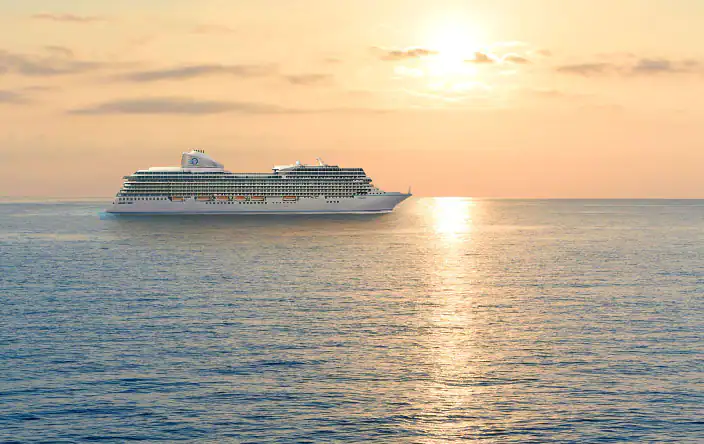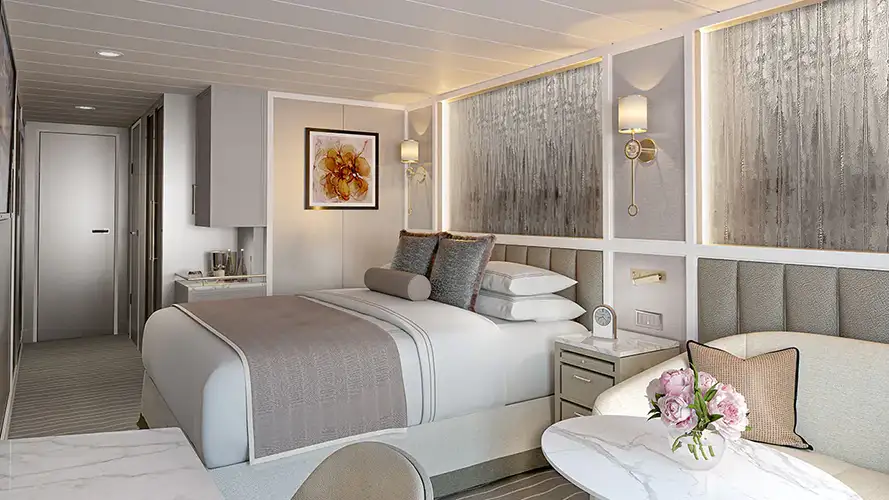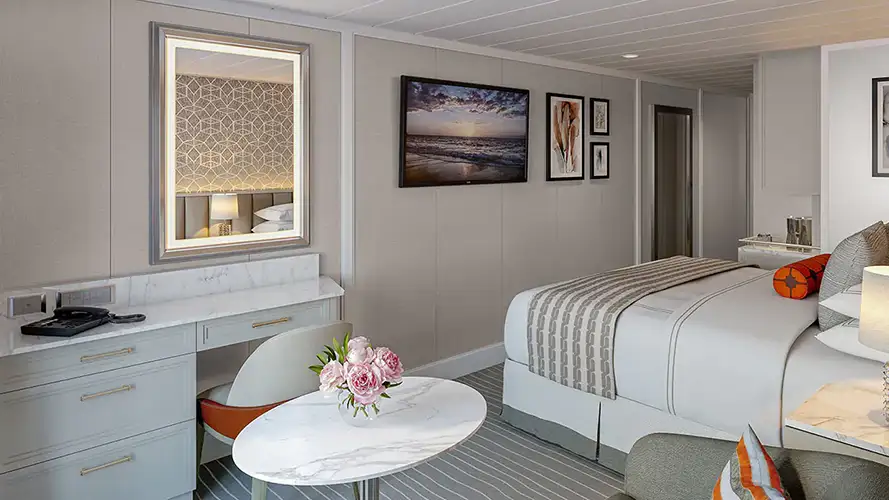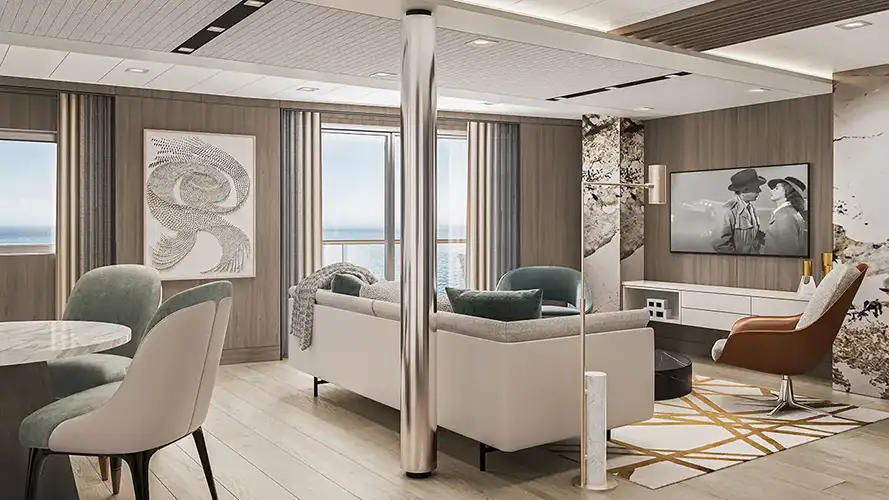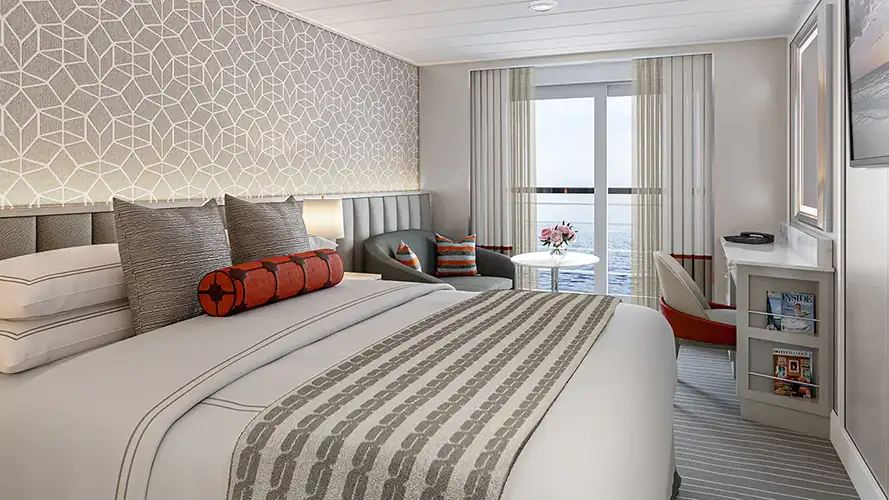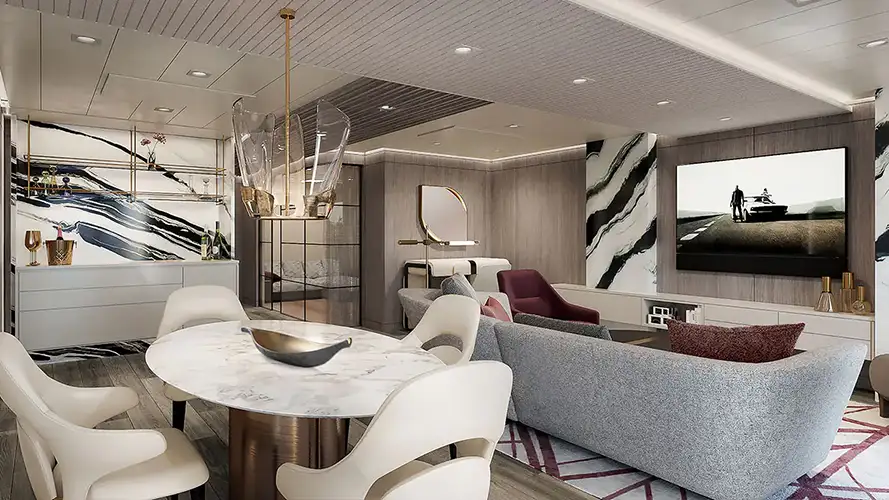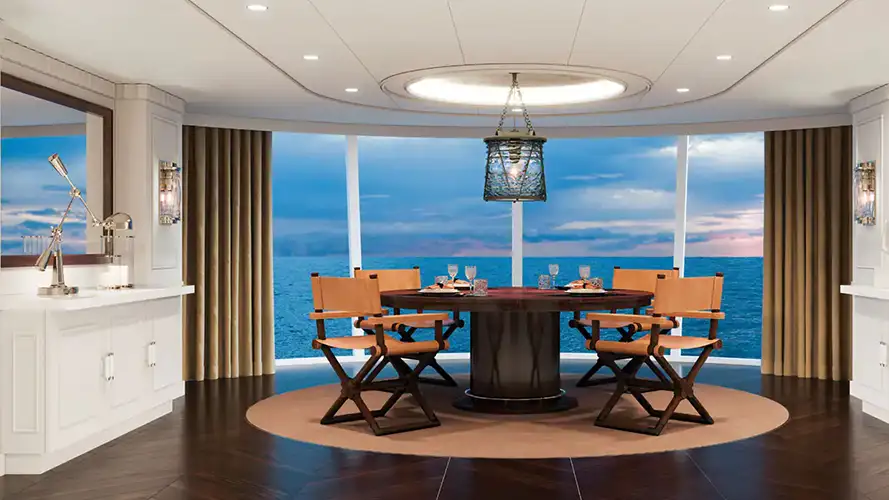Oceania Cruises Mediterranean: 7 nights from Trieste with Allura
Oct 3, 2026
Italy, Croatia, Greece
Cruise itinerary
Departure Port: Trieste ➞
Landing: Athens
-
Saturday, October 3, 2026 - 5:00 PMTrieste
-
Sunday, October 4, 2026 7:00 AM - 7:00 PMRavenna
-
Monday, October 5, 2026 7:00 AM - 5:00 PMRijeka
-
Tuesday, October 6, 2026 7:00 AM - 4:00 PMSplit
-
Wednesday, October 7, 2026 9:00 AM - 7:00 PMBrindisi
-
Thursday, October 8, 2026 7:00 AM - 4:00 PMKorfu
-
Friday, October 9, 2026 10:00 AM - 6:00 PMGytheio
-
Saturday, October 10, 2026 6:00 AM 5:00 PMAthens
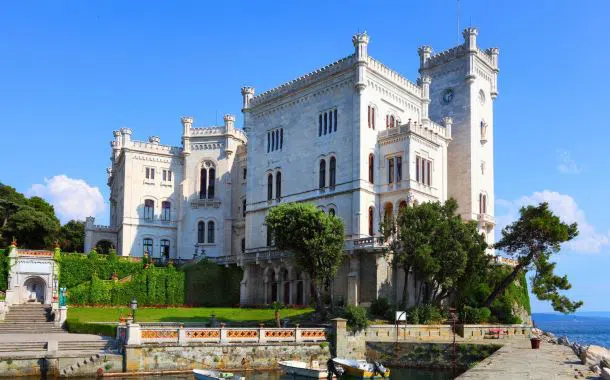
Trieste
Trieste overlooks the Adriatic Sea and it is the starting point of serveral cruise ships. Set sail from Trieste and discover the pearls of the Adriatic, Dubrovink e Kotor, up to reach the enchanting Greek Islands for a unique cruise!
Trieste is a city located in the far end of the Adriatic Sea, in Friuli Venezia Giulia, Trieste is developed on several levels. One of its peculiarities are its wide streets, squares where there are majestic buildings of various architectural styles, they are typical of the Austrian domination era. One feature of the city that is known worldwide is its tourist and commercial port.
The port of Trieste has always been an important commercial centre, for example during the Habsburg Empire it was the main sea outlet for commercial activities.
We suggest you to visit the majestic Piazza dell'Unità d'Italia, that directly overlooks the sea and offers a very suggestive sight. Trieste is a city where the influence of the East is evident both in its traditions and in the local cuisine that has united flavours and various ingredients for unique recipts. The main dishes consist of soups and stews, but also gnocchi and stuffed pasta. If, on the other hand, you want to try a meat dish, don't miss the tasty cevapcici, very spicy meatballs of Balkan origin. While to finish, enjoy a presnitz, a pastry made of puff pastry and dried fruit of Hungarian origin.
If your ship sets sail from Trieste, do not miss the opportunity to visit this city and its most important monuments such as the Molo Audace. From here you can admire the sea before heading towards the Church of Santa Maria Maggiore, built in Baroque style. Not to be missed is the San Giusto Hill and the famous Roman Theatre, which will leave all archaeology lovers speechless.
Trieste: Adriatic Elegance for Your CruiseSet sail from Trieste, Italy, a captivating port city on the Adriatic, known for its unique blend of Italian, Austrian, and Slovenian influences. With its grand Habsburg architecture, bustling Piazza Unità d'Italia overlooking the sea, and a rich literary history, Trieste offers an elegant and culturally rich departure point for your cruise. Before stepping aboard, explore its charming cafes, historical landmarks, and enjoy the city's distinct cosmopolitan atmosphere. Trieste promises a sophisticated and memorable beginning to your Adriatic and Mediterranean adventure.
Discover the Adriatic and Beyond from TriesteCruises departing from Trieste open up a world of possibilities across the sparkling blue waters of the Adriatic and Mediterranean seas. Whether you dream of discovering the picturesque coasts of Croatia, the historical richness of Montenegro, the ancient allure of Greece, or the charming ports of Italy, Trieste serves as an ideal launchpad. Enjoy the seamless transition from the refined elegance of Trieste to the luxurious comfort of your cruise ship, ready for days filled with relaxation, exploration, and unforgettable moments. Each voyage from Trieste promises breathtaking scenery and cultural immersion, leaving you with cherished memories.
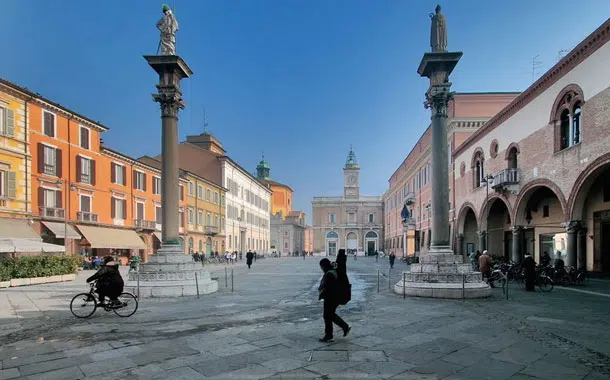
Ravenna
Ravenna is located on a plain near the confluence of the Ronco and Montone rivers, 10 km inland from the Adriatic Sea, with which it is connected by a canal.
Ravenna was important in history as the capital of the Western Roman Empire in the 6th century AD.
Nothing remains of the ancient Roman structures of Ravenna or its port of Classis.
The fame of Ravenna is instead based on the quality and quantity of its Christian monuments from the 6th-XVIII century.
Capital of the Western Roman Empire for 250 years and an important port of entry for the Eastern (Byzantine) Empire,
Ravenna reflects in its art and architecture a fusion of Roman architectural forms with Byzantine mosaics and other decorations.
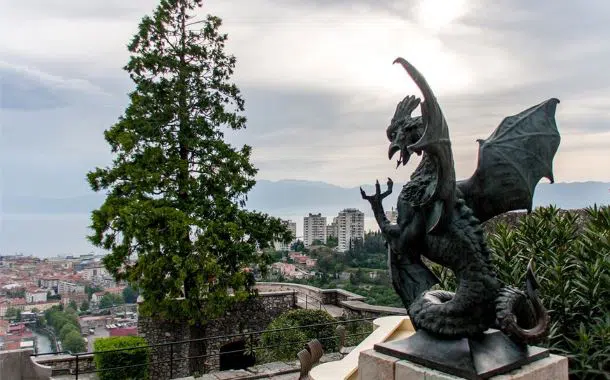
Rijeka
Rijeka is a Croatian seaport and city located in the Gulf of Kvarner, on the Adriatic coast. It is the third largest city in the country.
Before being annexed to the Yugoslav Republic in the twentieth century, it underwent Austro-Hungarian and later Italian dominations at the end of the nineteenth century. Today, the country has an excellent shipbuilding industry.
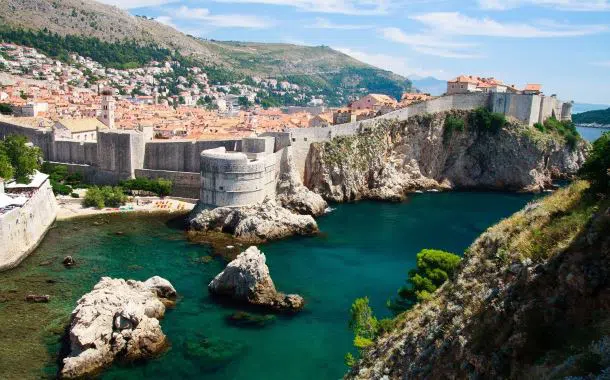
Split
Split is a city in Croatia, the capital of the Split-Dalmatia region, the main center of Dalmatia and, with its 178,192 inhabitants (2011), the second largest city in the country. Split is also a university and archiepiscopal seat.
The name of the city derives from the thorny broom, a very common shrub in the region, which in ancient Greek was called Aspálathos (Aσπάλαθος). Under the Roman Empire the city was called "Spalatum" and in the Middle Ages "Spalatro" in the Dalmatian language. In the Slavic language it is called "Split" while in Italian "Spalato". In the early 19th century the name became "Spljet" and then returned to the form "Split".
Split: Croatia's Adriatic Gem for Your CruiseEmbark on a captivating cruise from Split, Croatia, a vibrant city on the Dalmatian coast, famous for its stunning Diocletian's Palace, a UNESCO World Heritage site. This historical port offers a unique blend of ancient Roman architecture and modern Croatian life. Before setting sail, wander through the palace walls, explore its bustling markets, and enjoy the lively Riva promenade. Split provides a truly immersive cultural experience as your gateway to the enchanting Adriatic Sea.
Discover the Adriatic and Beyond from SplitCruises departing from Split open up a world of possibilities across the sparkling blue waters of the Adriatic and Ionian seas. Whether you dream of discovering the secluded coves of the Croatian islands, the historical richness of Montenegro, or the ancient allure of Greece, Split serves as an ideal launchpad. Enjoy the seamless transition from the vibrant Croatian coast to the luxurious comfort of your cruise ship, ready for days filled with relaxation, exploration, and unforgettable moments. Each voyage from Split promises breathtaking scenery and cultural immersion, leaving you with cherished memories.
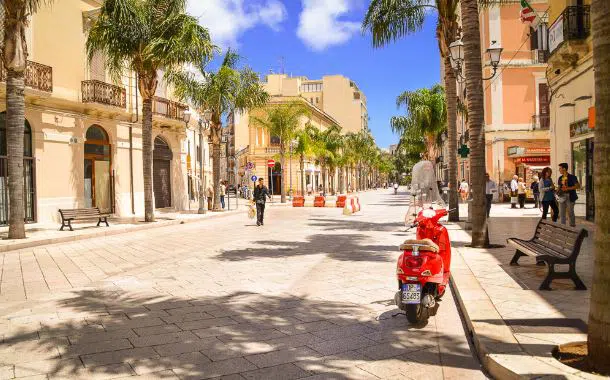
Brindisi
Many cruise ships, whose destination are Greek Islands, Croatia and Venice, set sail from Bari. On Taoticket you will find all departures on offer from Brindisi for a fairytale cruise in the Adriatic Sea.
Located in Salento plain along the Adriatic Sea, Brindisi has a magnificent natural port. The province of Brindisi stretches from the coast to the Adriatic Sea and includes areas of great historical interest. For instance, Via Traiana, the eastern part of the Itria Valley or the Roman road of Via Appia, the oldest road of the Roman Empire. In addition, Greece, Turkey and Albania can be easily reached from Brindisi by sea. The main trade traffic concerns coal, fuel oil, natural gas and chemicals.
If your cruise ship sets sail from Brindisi, do not miss the opportunity to visit this beautiful city in Puglia. We recommend you to visit the church of San Benedetto with its bell tower in Apulian Romanesque style, built around 1090 for the Benedictine nuns of Salento.
Do not a performance of the traditional dance of these lands: the pizzica. Its origins date back to the the cult of tarantismo, the belief that some women suffering from hysteria had been bitten by a tarantula. The only way to recover was to dance the pizzica continuously for days accompanied by the rhythm of tambourines, violins and mandolins. Nowadays pizzica is often still danced by young and old locals. There are many shows and artistic events you can attend, especially in the summer months. The traditional cuisine of Brindisi is made up of peasant elements such as barley flour and rich in blue fish, once undervalued but very nutritious. Stop here and try the famous fish soup with a glass of Negroamaro and your cruise will be tastier.
Brindisi: A Historical Gateway to the EastSet sail from Brindisi, a city in Puglia, Italy, steeped in history and serving as an ancient gateway to the East. With its Roman columns, charming waterfront, and historical churches, Brindisi offers a captivating starting point for your cruise. Explore its rich past, enjoy fresh seafood, and soak in the laid-back Southern Italian atmosphere before embarking on a journey across the Adriatic and Ionian seas. This vibrant port is your perfect introduction to a world of maritime adventure and cultural discovery.
Unveiling New Horizons from BrindisiCruises departing from Brindisi invite you to explore diverse and enchanting destinations, from the sun-kissed islands of Greece to the picturesque coasts of Albania and Montenegro. Whether you seek ancient historical sites, bustling markets, or tranquil beaches, Brindisi provides excellent access to a variety of compelling itineraries. Enjoy the convenience of a well-located port and the anticipation of new discoveries as you leave the heel of Italy behind for unforgettable experiences on the open water, promising relaxation and endless exploration.
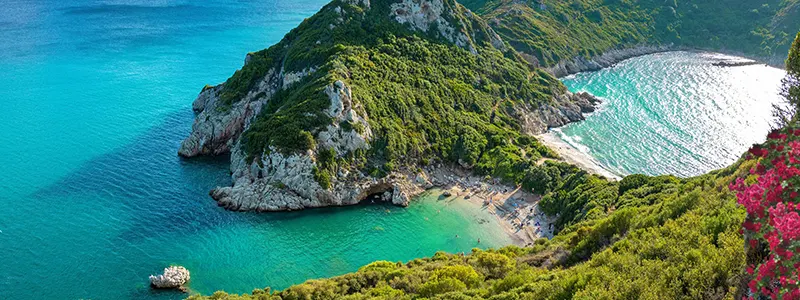
Korfu
Corfù is a Greek island in the Ionian Sea, located off the northwestern coast of Greece and south of Albania. The Greek island is a natural paradise. It is the second largest island of Greece, with 220 km of coastline. Its geography is dominated by mountain ranges and reaching 1000 meters above sea level, you will find Mont Pantokrator.
This mountain divides the island into three different areas. The northern area, abundant in olive groves, features green valleys and coastlines that form both small and large bays. The central part, the most populous and important, is covered by dense vegetation and lush hills.
The southern area consists of a large plain with less vegetation than the other regions but is decidedly more fertile. The most lively part of the city is found at Liston, similar to Paris’ Rue de Rivoli- a grand avenue lined with beautiful cafes and excellent restaurants. On the other hand, the island also has beautiful beaches washed by the Ionian Sea.
One of the most beautiful walks in the capital is along the harbor promenade, next to the city walls, where you can contemplate the view of the city. Corfù was the first Greek Island to open its doors to tourism, becoming an important international tourist centre that attracts many visitors every year. Even if tourism is evident in the coastal areas, the island has managed to preserve its authenticity.
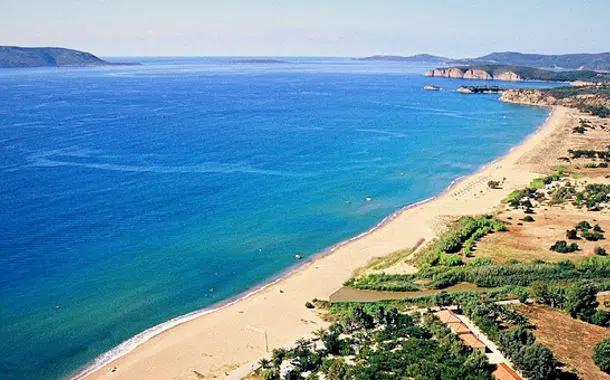
Gytheio
Located south of the Peloponnese, the city of Gytheio (or Gythion) is located north of the Gulf of Lakonia. The cosmopolitan atmosphere, the landscape of a unique island, and the variety of choices are the first impressions of visitors arriving in this paradise, formerly known as the land of the Gods. Gytheio was the port of the ancient city of Sparta and soon developed as the main export center of Laconia. On the hill, north of the village, the ruins of the citadel reside. At the foot of the hill is the ancient theater which still hosts numerous cultural events. Ornamented by various Roman constructions, associated with the mountains and the sea, it gives a prestigious natural landscape. All this wonder is combined with neoclassical buildings, with the addition of the small and charming fishing port. The beaches here are fantastic (many awarded with blue flags), especially those of Mavrovouni and Selinitsa, where you can swim and try different water sports such as windsurfing. Many cultural events take place during the summer, with music festivals, theatrical performances, and attractions for young people. The summer ends with the start of the traditional fair on September 14th which lasts for a week and, subsequently, on September 30th near the port. 10 km from Gytheio, on the road to Areopolis, there are the ruins of Passava castle, built in the early years of the conquest of the Peloponnese by the Franks, constituting the base of their barony. Don't forget to visit Trinissa, a wonderful complex of islands that provide a secluded, relaxing, and natural place.
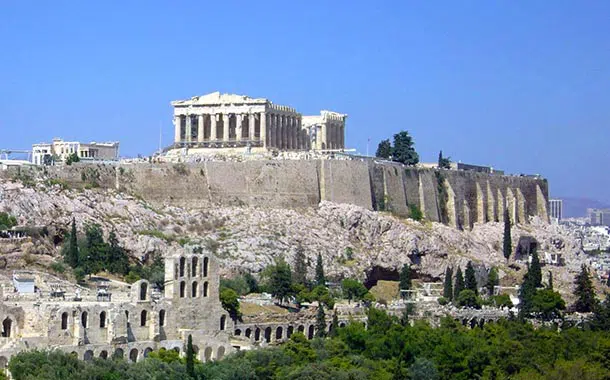
Athens
For many, Athens is a city lived two thousand five hundred years ago. Symbol is the mighty Acropolis which dominates almost every view and itinerary of every visitor, crowned by the iconic Parthenon, stands above the city, watching the sprawling modern metropolis in evolution.
Athens, the capital of Greece, is a city where antiquity and modernity, history and contemporary culture blend in a unique way. Everyone knows that the name of the city derives from the ancient Greek goddess of wisdom and justice. However, few people actually know the legend behind this event. According to myth, Athena and Poseidon, the God of the seas, vied for the right to name the city. Poseidon, to impress the inhabitants, gave them water, while Athena gave them an olive branch.
At first the choice fell on Poseidon, since the citizens considered water the most precious gift. When, once they tasted the water, they discovered that it was salty and not drinkable, they changed their minds and recognized Athena as their patron. One of the most famous historical sites in the city is the Acropolis, a majestic hill topped by ancient Doric temples, including the Parthenon, built in 477 BC. and the Erechtheion, built between 421 and 406 BC. Climbing the Acropolis, tourists can enjoy a breathtaking view of the city and the Aegean Sea. However, Athens is not only history, but also a lively cultural capital. In the Plaka district, located at the foot of the Acropolis, it is possible to stroll through the welcoming streets, visit the traditional Greek taverns and enjoy the authentic atmosphere.
Then there are the numerous cultural activities offered by the numerous museums, galleries and theaters present in the city. Athens is an important port for cruise ships that offer trips to the Mediterranean and beyond. Cruises from Athens allow guests to explore the rich cultural heritage of Greece, including the islands of Crete, Santorini and Mykonos, where you can admire the crystal clear waters of the Aegean Sea and a coast of white houses.
In addition to the Greek islands, cruises from Athens also offer the opportunity to visit other exciting Mediterranean destinations, including historic cities in Italy, Croatia and Turkey. Athens is therefore not only the historical and cultural center of Greece, but also an important starting point for cruises in the Mediterranean, which offers guests the opportunity to immerse themselves in the great history and splendid landscapes of this unique region.
Many still think of Athens as an ancient city that thrived two and a half thousand years ago. Its symbol is the mighty Acropolis, which dominates almost every view and the itinerary of every visitor, and it is crowned by the iconic Parthenon, which rises above the city, overlooking the sprawling and evolving modern metropolis.
Perhaps the most significant change is in the historical centre, which is almost unrecognisable since cars have been banned. This has liberated the area with the most significant archaeological sites, creating the longest, and undoubtedly one of the most splendid, pedestrianised zones in Europe. This huge archaeological park has brought past and present together, returning the cultural and social life of the city to the area around the ancient monuments and surrounding neighbourhoods.
Athens remains a city of contradictions; it is both frustrating and seductive. It is the oldest city in Europe, yet still in a state of transition. It is one of the safest and most vibrant European cities - an intoxicating mix of grunge and grace with an undeniably urban soul.
